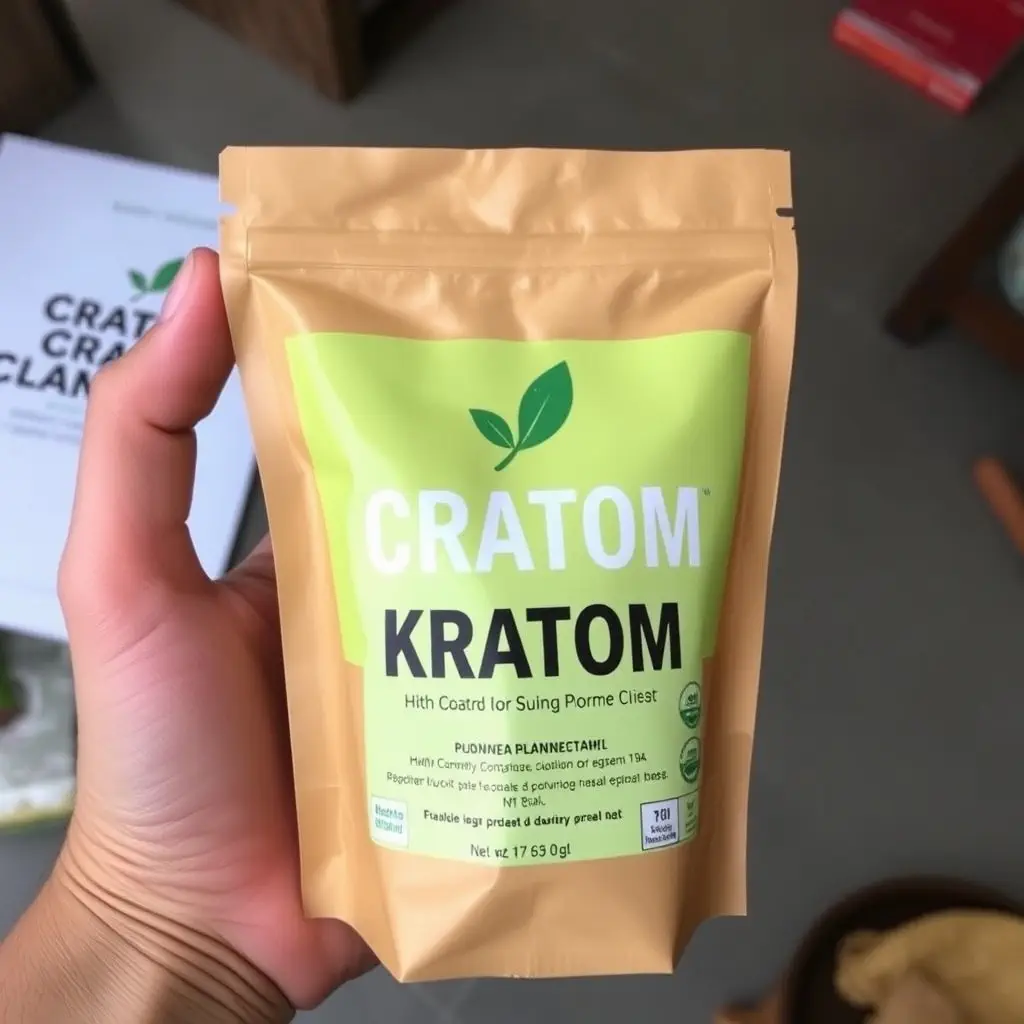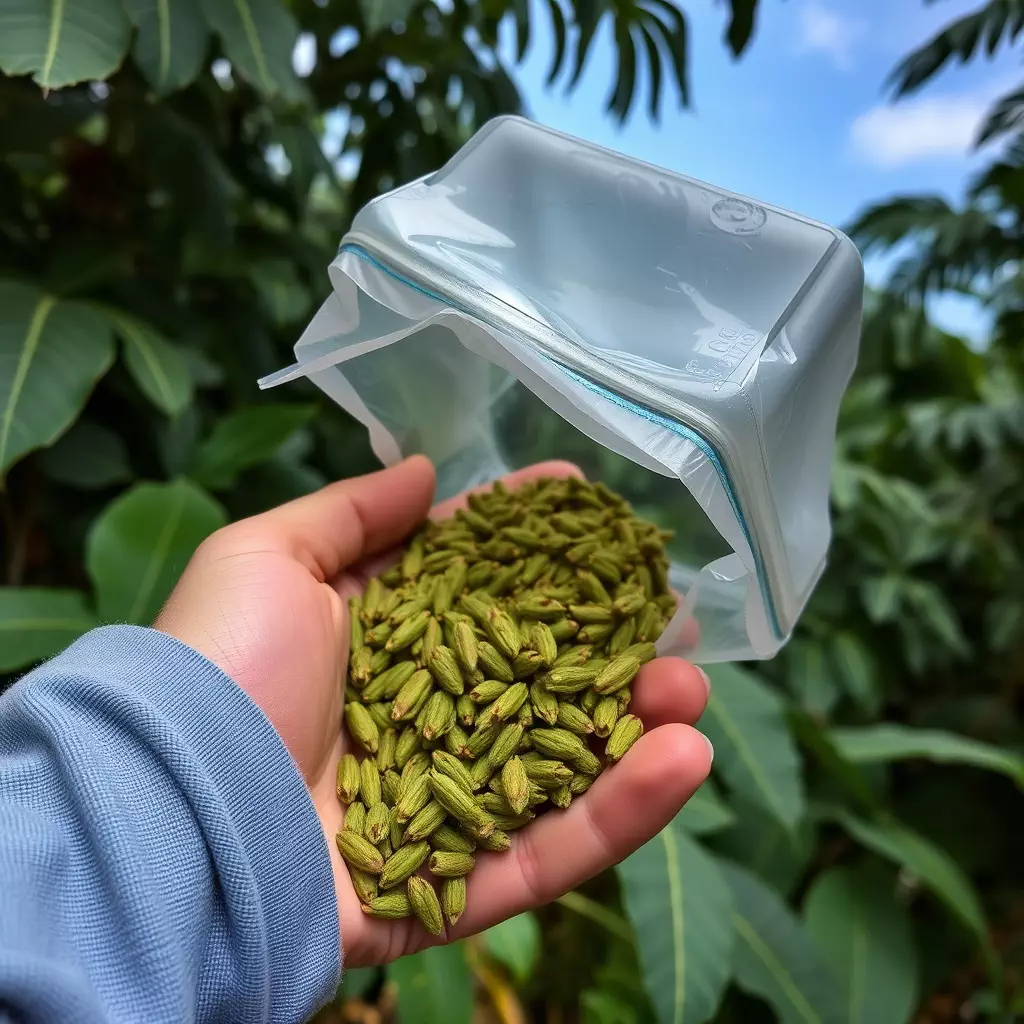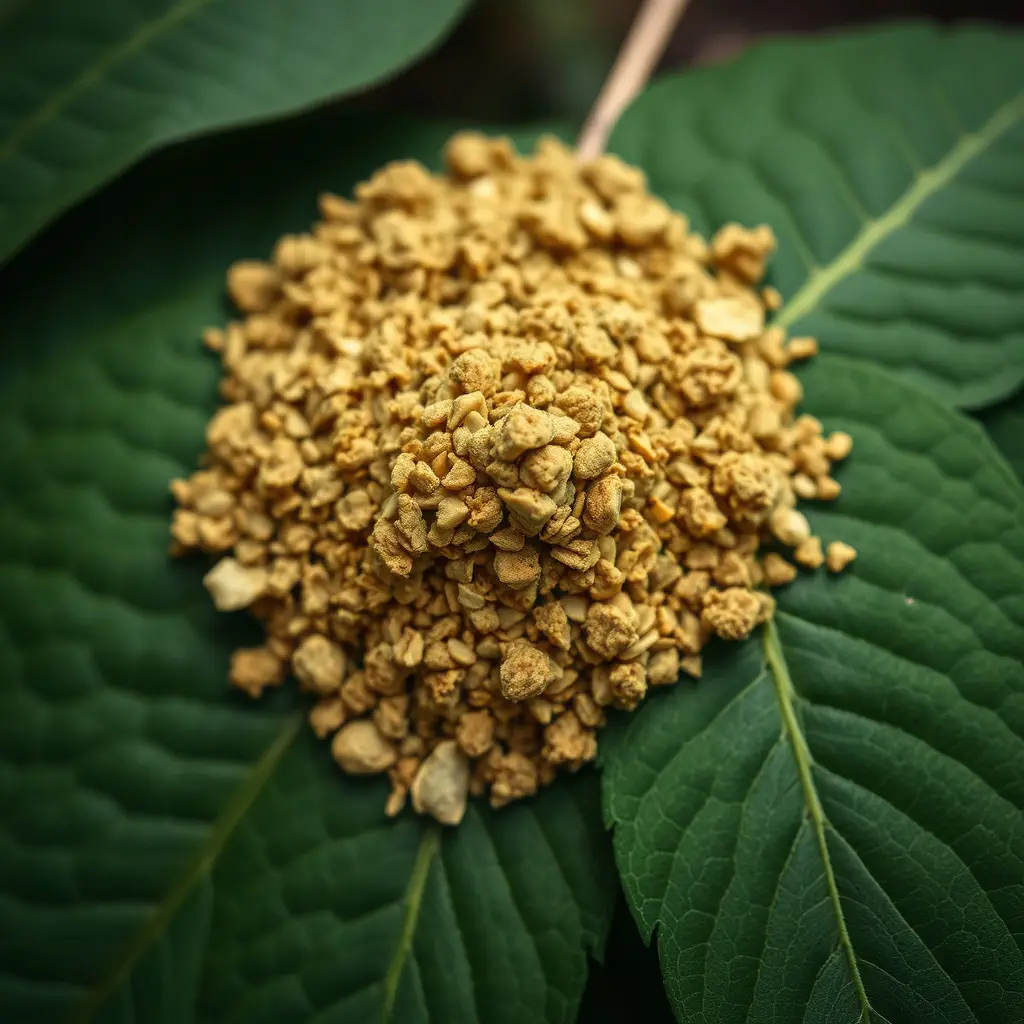Kratom, a plant from Southeast Asia, has emerged as a potential alternative for managing opioid withdrawal symptoms, particularly in Utah's battle against its opioid epidemic. The alkaloids mitragynine and 7-hydroxymitragynine within kratom are believed to interact with brain opioid receptors, offering relief for those experiencing withdrawal. In Utah, local farmers have taken up the cultivation of kratom, or 'growing kratom in Utah,' as a response to its growing demand, ensuring quality and supply. While some advocate for its benefits within holistic treatment plans, there is ongoing debate among scientists and regulatory bodies regarding its efficacy and safety. It is crucial to approach the use of kratom for withdrawal management under professional medical supervision due to potential side effects and legal considerations. The cultivation process in Utah involves selecting suitable strains, managing soil pH, and implementing a watering regimen tailored to the state's arid climate. Successful cultivation relies on sourcing quality kratom seeds or saplings and maintaining optimal conditions to replicate the plant's Southeast Asian habitat. This local production enhances access to high-quality kratom and supports those undergoing opioid withdrawal, promoting overall well-being. As kratom cultivation in Utah grows, so does the potential for research and consumer use; however, its integration into treatment plans must be cautious and evidence-based, with ongoing medical supervision to ensure safety and effectiveness within a comprehensive treatment strategy. Healthcare providers are urged to stay informed on kratom's evolving role in addiction treatment, aiming for its responsible inclusion where appropriate and beneficial.
exploring the potential of kratom as a natural remedy for opioid withdrawal, this article delves into its efficacy and the nuances of cultivating the plant in Utah. We will examine how kratom, specifically grow kratom in Utah, can be integrated into treatment plans, offering insights from both cultivators and healthcare professionals. Join us as we navigate the complex intersection of traditional botanicals and modern medicine in addressing one of today’s most pressing health challenges.
- Understanding Kratom's Role in Mitigating Opioid Withdrawal Symptoms
- The Journey of Cultivating Kratom in Utah: A Grower's Perspective
- Integrating Kratom into Substance Abuse Treatment Plans: A Comprehensive Approach
Understanding Kratom's Role in Mitigating Opioid Withdrawal Symptoms

Kratom, a plant native to Southeast Asia, has garnered attention in discussions surrounding opioid withdrawal management. The mitigating effects of kratom on withdrawal symptoms have been a subject of interest for individuals seeking alternatives to traditional medical interventions. Kratom contains alkaloids such as mitragynine and 7-hydroxymitragynine, which are believed to interact with the opioid receptors in the brain, potentially offering relief from the agony of withdrawal. While the efficacy and safety of kratom for this purpose remain a topic of scientific debate and regulatory scrutiny, many individuals report its benefits as part of a comprehensive treatment plan. In Utah, where the opioid epidemic has had a profound impact on communities, the cultivation of kratom, referred to as ‘growing kratom in Utah,’ has emerged as a local approach to meeting the demand for this substance. The cultivation allows for greater control over product quality and availability, which is crucial for those relying on kratom as part of their withdrawal management strategy. As with any substance used to alleviate opioid withdrawal symptoms, it is imperative to approach kratom with caution, under the guidance of a healthcare professional, due to its potential side effects and legal considerations.
The Journey of Cultivating Kratom in Utah: A Grower's Perspective

In the rolling hills and diverse microclimates of Utah, a dedicated group of cultivators is pioneering the cultivation of Mitragyna speciosa, commonly known as kratom. The journey to grow kratom in Utah presents unique challenges and opportunities for these farmers. The climate, with its distinct seasonal changes, requires meticulous planning and adaptation to ensure optimal conditions for the plant’s growth. Growing kratom in Utah involves selecting the right strain, managing soil pH levels, and understanding the precise watering schedule that balances hydration needs with the region’s arid periods.
The process begins with sourcing high-quality kratom seeds or saplings, ideally from reputable vendors who understand the specific needs of this tropical plant in a subtropical environment like Utah. Once established, the plants thrive under the attentive care of local growers who monitor humidity and temperature to mimic the plant’s native Southeast Asian conditions. As these cultivators refine their techniques, they contribute to the sustainability and legality of kratom sourcing within the United States. Their expertise and dedication to the craft ensure that those seeking kratom for opioid withdrawal symptoms can find a reliable and high-quality local source, contributing significantly to the well-being of individuals navigating this challenging transition.
Integrating Kratom into Substance Abuse Treatment Plans: A Comprehensive Approach

Integrating Kratom into Substance Abuse Treatment Plans requires a nuanced approach that takes into account both its potential benefits and risks. As the cultivation of Kratom, Mitragyna speciosa, gains traction in states like Utah—where grow Kratom Utah operations are emerging to meet demand for both research and consumer use—it’s crucial to understand its role within the broader context of addiction treatment. Kratom alkaloids, primarily mitragynine and 7-hydroxymitragynine, have been reported to alleviate opioid withdrawal symptoms, offering a potential natural alternative for those seeking to manage these uncomfortable effects. However, the use of Kratom in treatment plans should be carefully considered as part of a comprehensive strategy that includes medical supervision and other evidence-based interventions. This approach not only leverages Kratom’s potential benefits but also monitors its efficacy and safety in conjunction with other therapeutic modalities, ensuring a holistic and personalized treatment experience for individuals undergoing opioid withdrawal. As the body of research surrounding Kratom continues to grow, it is imperative that healthcare providers stay informed about its implications, with an eye toward responsible integration into treatment protocols where appropriate.
Kratom, a plant native to Southeast Asia, has emerged as a topic of significant interest in the realm of opioid withdrawal management, particularly within the context of Utah’s cultivation landscape. This article has explored the multifaceted relationship between kratom and opioid withdrawal symptoms, highlighting its potential role in mitigating the discomfort associated with this challenging process. Through the insights of local growers and the perspectives of healthcare professionals on integrating kratom into treatment plans, it is evident that this botanical substance warrants careful consideration as a tool in addressing opioid addiction. As research continues to evolve, it is crucial for policymakers, medical practitioners, and communities to engage with the cultivation and potential therapeutic use of kratom in Utah, ensuring informed and responsible approaches to its application in substance abuse treatment. With ongoing dialogue and scientific inquiry, kratom may hold promise for those seeking relief from opioid withdrawal symptoms, ultimately contributing to more comprehensive recovery strategies.






